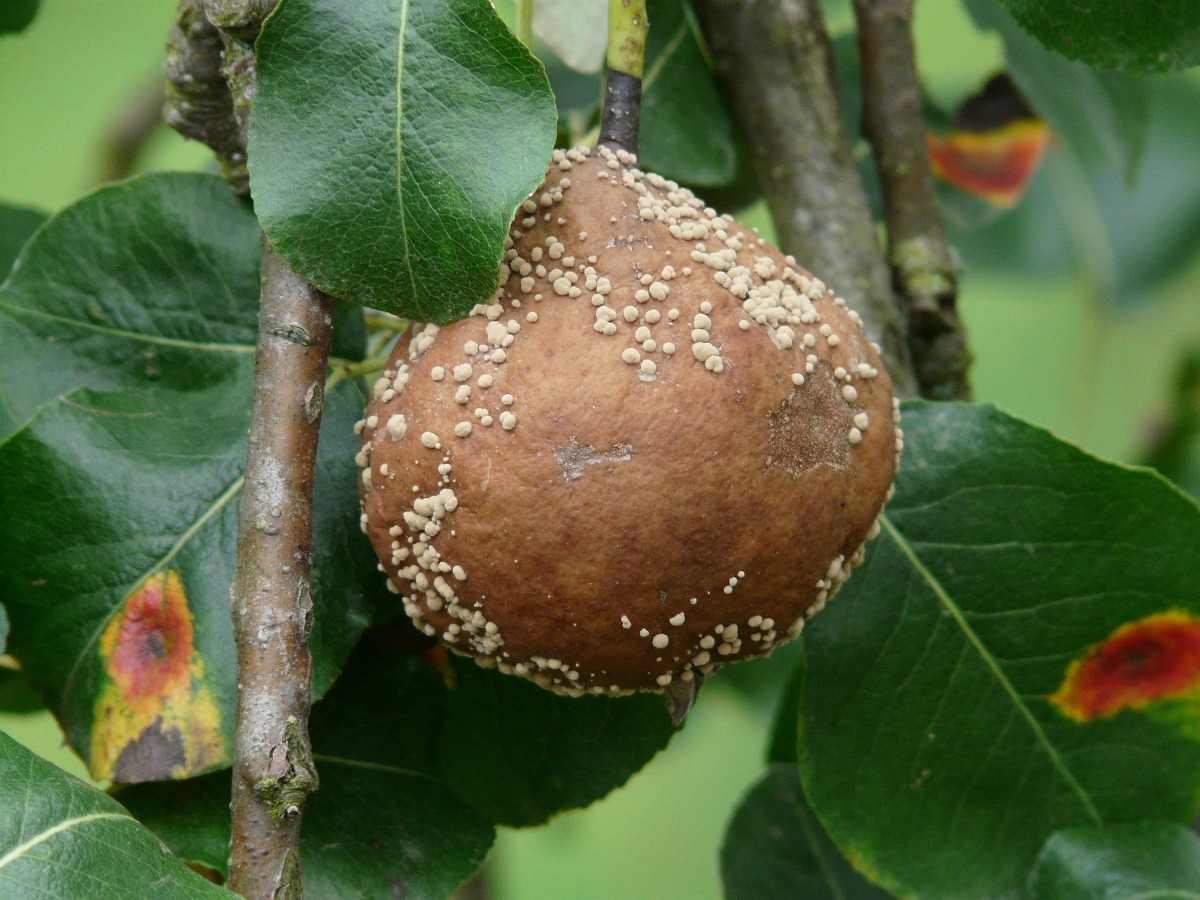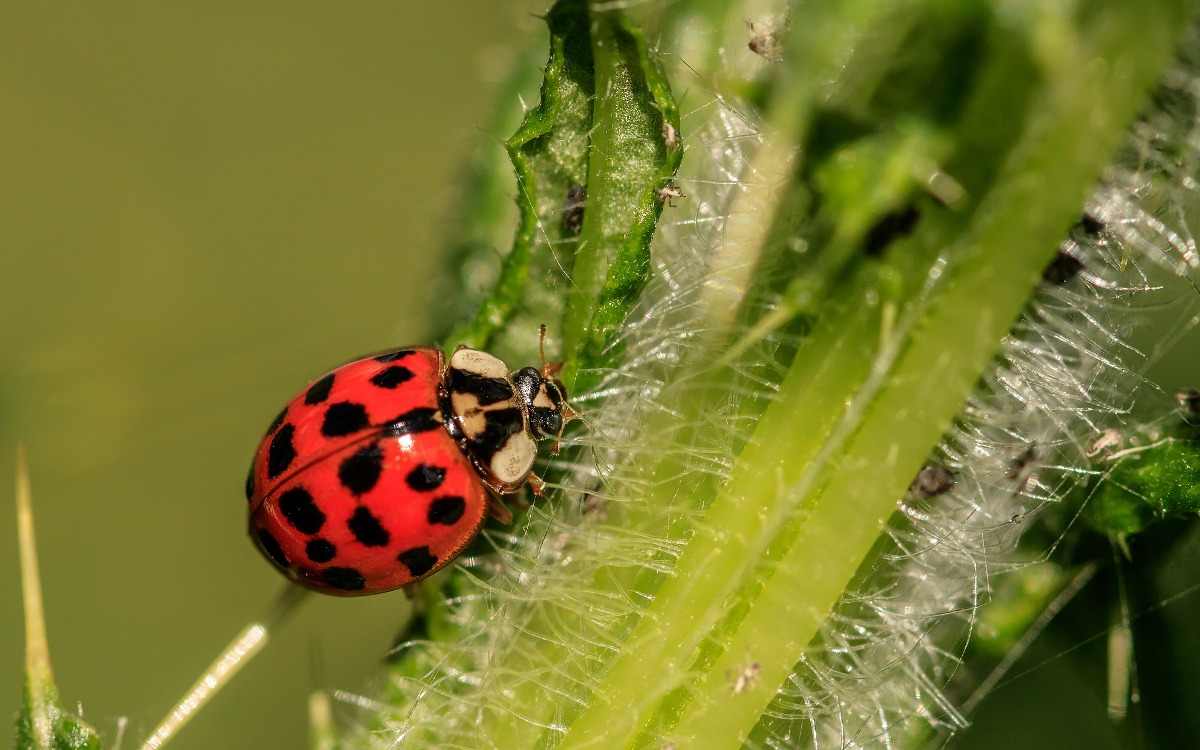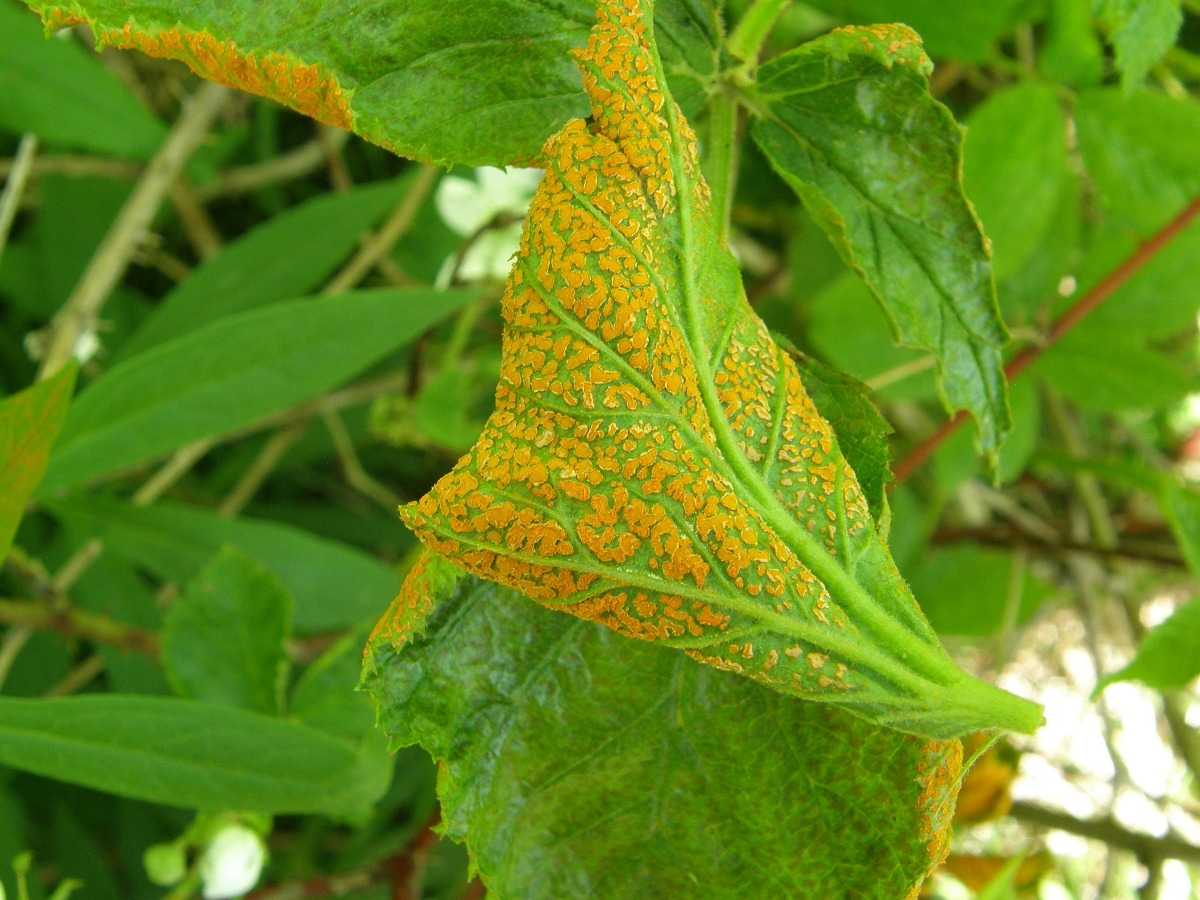Introduction to crop pest and disease management
A pest is mainly defined as an organism that occurs where it is not wanted (weeds, mosses, and algae’s) or an organism that has a detrimental effect on turf (fungi, insects, mammals, and birds). Plant disease is an impairment of the normal state of a plant that interrupts its critical functions. All plant species, wild and cultivated alike are subject to disease. Each plant species is susceptible to characteristic diseases; these are, in each case, relatively few in numbers. The occurrence and prevalence of diseases in plants vary from season to season, depending on environmental conditions, presence of the pathogen, and the plant varieties are grown.
A step by step guide to crop pest and disease management
Pests and diseases infiltrate even healthy gardens. It is important to regularly check plants for spreading diseases or signs of pest damage in plants. A successful disease control program depends on crop production, which closely aligns with the goals of pest management. One must start with the selection of appropriate plant varieties, an irrigation system that minimizes leaf wetness. Also, fertilizer program that results in optimal plant growth, plant density and canopy management that afford optimal air circulation and pesticide coverage when needed, a transplant program that minimizes transplant shock, a clean seedling production program, effective pest monitoring by scouting regularly during the season, and, a harvest and shipping procedure that maximizes shelf life and quality.

Avoiding Pests and Disease – Some healthy plants have their internal pest and disease prevention tools. Plants will most attract diseases or pests when they are stressed by too much or too little water. Check soil moisture regularly to track the effectiveness of your watering strategy.
Identifying Pests – During the growth of the garden, keep an eye out for any obvious bite marks or colonies of bugs. Be sure to check the underside of plant leaves and along plant stems. Identifying the bite marks and the plants that occur on may be all you want to identify the pest. Other pests will be identified by their increasing numbers.
Identifying Disease – Some diseases are often much more challenging to identify but are much less likely to occur. Diseases will impact plants in the form of discolored leaves, drooping leaves, or stunted growth. If you think a plant has a disease, first check the soil moisture in the garden and pay close attention for a few days. More often than not, watering plant issues are misdiagnosed as a disease.
Pest and disease management in vegetable crops
Pests and diseases are responsible for millions of dollars in damages to vegetable plants each year. Vegetable diseases take their energy from the plants on which they thrive and they are responsible for a great deal of damage and are encouraged by wet weather, poor drainage, or inadequate airflow. Some vegetable plant diseases are characterized by a variety of symptoms, including moldy coatings, wilting, scabs, blotches, rusts, and rot.
Several common vegetable pests and diseases and their control are;
Anthracnose – Tomatoes, cucumbers, melons, and beans are most affected by anthracnose. Symptoms have fruits and pods with small, sunken spots. Pinkish spores appear in the center of the spots in wet weather. To control, apply neem sprays or liquid copper before and during infection periods. Begin applications just as leaf buds break in the early spring and the case of severely infected plants, you’ll need to properly destroy them.
Bacterial Leaf Spot – Infected plants have small, dark water-soaked spots on plant leaves. Bacterial leaf spot mainly affects tomatoes, peppers, and cabbage-family crops in the vegetable garden. Apply sulfur-based fungicides weekly at the first sign of disease to prevent its spread. Also, limit high-nitrogen fertilizers, rotate crops and destroy any heavily infected vegetable plants.
Aphids – In addition to pumpkins and squashes, aphids attack almost all vegetables, including potatoes. There are winged and non-winged aphid types.
Club Root – A serious problem in gardens, clubroot infects brassica crops such as cabbage, broccoli, cauliflower, etc which wilt during the heat of the day. Older plant leaves turn yellow and drop. Roots are distorted and swollen. Look for disease-resistant plant varieties and rotate crops.
Downy Mildew – Symptoms of downy mildew vary with environmental conditions. The best way to prevent downy mildew is to avoid the conditions that favor it. Prune plants to improve air circulation. Downy mildew commonly damages brassicas, cucurbits, onions, and leafy greens such as spinach and lettuce.
Early Blight – Symptoms of early blight include brown and black spots on plant leaves that enlarge and develop rings like a target. Leaves can die. Some prevention measures are proper seed selection and using a copper-based fungicide early. The best way to prevent blight is to avoid prolonged periods of wetness on the surface of the plant leaves by watering in the morning or using drip irrigation and by rotating your crops from year to year.
Late Blight – Late blight affects tomato and potato plants in the garden. Select plant resistant cultivars when available and dispose of all infected plants and tubers. And, apply copper sprays every 7 days or less, following heavy rain or when the amount of disease is increasing rapidly.
Cabbage Worm – Cabbage worm adults are white or yellowish-white butterfly larvae with small light black color spots on the wings. They first appear around mid-April and continue to be a problem until around mid-September. They mainly attack cabbages, broccoli, cauliflowers, collard greens, and kale. They fly during the day and lay eggs on the undersides of plant leaves.
Powdery Mildew – Powdery mildew is caused by the fungus Erysiphe cichoracearum, may attack all vine crops and other vegetables. The cucurbit crops commonly affected are cucumber, gourd, muskmelon (cantaloupe), pumpkin, and squash. Powdery mildew disease first appears around midsummer and will persist into the fall. A major symptom is the appearance of small, circular, talcum-like spots that gradually expand on vines and plant leaves.
Rusts – Rusts found on mature plants, common rusts affect everything from asparagus to beans, carrots, corn, and onions. Prevent infection by providing good air circulation around vegetable crops. Remove and destroy seriously affected plants. Early in the season, dust plants with sulfur powder to prevent infection and to keep mild problems from spreading.
Wilt, Fusarium, and Verticillium – Affects a wide range of vegetable plants including potatoes, tomatoes, peppers, and melons. Symptoms include wilting plants and plant parts that turn a yellow color. Crop rotation does not control these all diseases because so many crops are susceptive.
Common pest and disease management of foliage and flowering plants
The common pests of foliage and flowering plants are spider mites, mealy bugs, fungus gnats, whitefly, and aphids. The use of plant material for outdoor as well as indoor decoration exposes them to all manner of pests, such as caterpillars, slugs, snails, and thrips, many of which thrive once the plants are moved back indoors. For this reason, plants which are being moved from decks, patios, etc. to the home or office should be washed thoroughly with a spray of clear water.
Some diseases are rare on foliage and flowering plants. The only ones likely to be encountered are Botrytis, the gray mold fungus that invades dead and dying tissues, soft leaf spot, or crown rot fungi which thrive in moist atmospheres. The best cure is to remove affected plant parts, and avoid splashing the plant when watering; give space for air circulation, or move infected plants to a drier place.
Control methods – Despite the best control programs employed by growers and retailers, it happens that a new plant harbors pests whose eggs have survived to hatch in your home conditions. A period of isolation (10-14 days) can be the answer. Yet some pests could not show up for a longer time, being present in small numbers until the indoor climate becomes more favorable; for example, spider mites thrive in dry air, so may not become evident until the humid season is past.
Regular and frequent checking for abnormal growth and insects can be combined with checks for watering needs. Most pests lurk under plant leaves and close to the growing tip where tissue is softest. Most of these pests can be washed off with a spray of water. Several washes over 2 or 3 weeks, plus isolation for the infested plant to prevent the pest from moving to other plants, generally eliminate the problem. Chemical sprays are not pleasant to use and are recommended for outdoor applications. Some pesticides are hazardous, not only to the environment but to the plant tissue. Ferns are extremely sensitive to all forms of chemical spray, and infested fronds are best removed and then destroyed.
Common pests and diseases of fruit crops and their control
In case if you miss this: Brinjal Seed Germination.

The major pests inflicting considerable damage to fruit trees are scale insects, mites, termites, fruit flies, leaf miners, and mealy bugs.
Fire blight – The pear, apple, and quince are liable to one mysterious disease which it is impossible to guard against or cure, the fire blight.
Apple Blight – Apple blight is another disease. Again, no better remedy is known than to cut out the infected part at once. In coping with insects we can act intelligently and therefore successfully.
Codling Moth – The codling moth is another enemy that should be fought resolutely, for it destroys millions of pounds of fruit. The codling moth disease is a member of the Lepidopteran family Tortricidae. They are major pests to crops, fruits such as apples and pears. Because the larvae are not able to feed on plant leaves, they are highly dependent on fruits as a food source and thus have a significant impact on crops.
Bacterial speck – Bacterial speck is a bacterial disease and results in small, black spots on leaves, stems, and fruits of tomatoes, at all stages of plant growth. It is common from winter to mid-spring. Copper hydroxide can give some control.
Clubroot – Clubroot disease is a fungus disease that only affects Brassicas (the broccoli family). Some plants are yellowish and stunted, with large malformed ‘clubbed’ roots. Clubroot can be severe in warm weather. Avoid growing brassicas in the same area for years and lime the soil if it is acidic.
Canker Worm – The cankerworm in those localities where it is destructive can be guarded against by bands of tar-covered canvas around the fruit trees. The moth cannot fly but crawls up the tree in the late autumn and during mild spells in winter, but particularly throughout the spring until May.
Common pest and disease management of herbal crop
Herbs are resistant to garden pests and diseases. Growing any herb plant, thorough soil preparation, good cultivation practices, adequate watering, and good drainage keeps herbs growing well and trouble-free. The essential fragrant oils of most herbs are a natural repellent to insects.
Aphids – Aphids love the tender new leaves of herb plants and, in large numbers, may cause curling of the foliage. Aphids are commonly found among crowded and rapidly growing herbs. Horticultural soaps and neem oil may aid in exterminating these kinds of pests.
Spider mites – Spider mites prefer hot, dry conditions and are spotted on the underside of the herb leaves. Protecting the herbs from these pests is as simple as a strong stream of water aimed at the foliage and regular irrigation.
Whiteflies – Whiteflies will also appear on the underside of the plant leaves.
Leafhoppers – Leafhoppers rarely do much damage but do feed on basil, oregano, and parsley, etc.
Leaf miners – Leaf miners will attack succulent basil, leaving tunneling trails between the upper and lower leaf surfaces.
Flea beetles – Yet another pest, the flea beetle is again just that, chewing pinprick holes in the leaves of herb plants but sustaining no serious damage.
Weevils – Weevils, such as the carrot weevil, will feed on parsley roots but inflict no lasting damage.
Caterpillars – Identify caterpillars as harmful before trying to eradicate them and black Swallowtail caterpillars are found on dill, fennel, parsley, and related plants. In many gardens, dill and parsley are planted particularly to attract this butterfly.
Rust – A fungal disease found on the mint, lemon balm, and similar plants, rust are not destructive of the entire plant. Because mints are persistent and propagate through underground runners, rust-infected plants can be cut back to the ground and allowed to resprout.
Mildew – Lemon balm and yarrow may show signs of powdery mildew. Thinning, clipping off the infected parts, and clipping adjacent plants back to increase air circulation is effective.
Very few herbs (mints and lemongrass) thrive in wet soil and waterlogged soils encourage fungal diseases such as fusarium root rot. Symptoms appear as brown streaks on the herb stems with a result of the general collapse of the plant. Rust plagues many members of the mint family and presents itself as rusty orange lesions on the underside of the plant leaves. Defenses against diseases of herbs are proper conditions, sanitation, removal of weak or otherwise infested foliage, and regular pruning. Raised beds will foster good drainage and watering in the morning to give the herb plenty of time to dry out will retard the spread of fungal spores which could result in disease.
Common methods of crop pest and disease management
You should not miss this: Organic Broccoli Cultivation, and Growing Practices.

Growers want to control pests and diseases to get maximum production and prevent crop loss. Prevention of pests and diseases before any damage is done is most desirable. Four common methods of control of pests and diseases are;
- Biological,
- Cultural,
- Chemical, and
- Integrated control
Chemical – Using chemical control such as herbicides that control or retard the growth of weeds.
Cultural – Using practice such as controlled grazing, tilling, controlled burning, revegetation, and hand pulling, etc.
Biological Control – Using beneficial creatures such as insects or fungi that damage the weeds.
Biological methods of crop pest and disease management
This uses useful living organisms, such as predators or parasites, to control plant pests. Predator insects feed on the pests and control their numbers. Some parasites live part of their life inside pests and finally kill them. Biological can occur naturally or growers can release predators and parasites deliberately. The use of bio-control agents in disease management is increasing, especially among organic growers. These products are considered safer for the environment and applicator than conventional chemicals.
Advantages and disadvantages of biological control are;
Biological controls do not involve chemicals, so they leave useful insects unharmed. They target the pest affected. Once established biological control is very cheap, cost-free, and does not harm the environment.
The disadvantage is biological control is costly to develop and manage. It takes time to work and the pest populations are high before there are significant numbers of predators and parasites.
Cultural methods of crop pest and disease management
Cultural control methods involve changing the environment to make it undesirable for pests and diseases. Cultural practices serve an important role in disease prevention and management. The benefits of cultural control methods beginning with the establishment of a growing environment that favors the crop over the pathogen. Reducing plant stress through environmental modification promotes good plant health and aids in reducing damage from plant diseases. Examples of cultural pest management methods are;
- Mechanical tilling or plowing
- Hand pulling of the weed with all its roots
- Grazing sheep on leafy spurge to damage the plant leaves and stems and stop seed production
- Controlled burning a weed-infested area to clear it for seeding of desirable plants
Chemical methods of crop pest and disease management
Chemical pesticides are used to control diseases, pests, or weeds. Chemical control is based on substances that are toxic or poisonous to the pests involved. When chemical pesticides are applied to protect plants from pests, diseases, and overgrowth by weeds, we speak of plant protection products. It is of course important that the plant that requires protection does not itself suffer from the toxic effects of the protection products. Pesticides are used to control pests and these chemicals are also called insecticides.
Deciding which pesticide to use is determined by;
- The type of pest that needs controlling
- The type and value of the crop
- The presence of any beneficial insects.
Chemical treatment
This mainly involves using chemicals that are toxic to most living organisms. A period where no crops are grown in the soil is necessary, as residues can remain and contaminate the crop.
Methyl bromide has been used on soils before planting strawberries and it has become less popular as it is an ozone-depleting toxic gas. Chloropicrin is an alternative chemical to use. Greenhouses are sterilized with formaldehyde, formic acid, or burning sulfur. Pests such as red spider mite, whitefly, and grey mold can be greatly reduced by these methods of control.
Integrated pest management (IPM)
Integrated Pest Management (IPM) is also called Integrated Pest Control, is an effective and environmentally sensitive approach to pest management that relies on a combination of common-sense practices. Commercial growers prevent and control pests and diseases for optimum growth. Then, they choose the most cost-effective management practice to match the type of crop they are growing and the market they are supplying.
Integrated Pest Management is a grower that uses a combination of cultural, biological, and chemical methods to prevent and control pests and diseases. This approach came about because pests and diseases have developed resistance to chemicals, and consumers have become concerned about chemical use and residues on fruit and vegetable crops. The method to use depends on the presence of natural enemies, the type of cultural control methods obtainable, and environmental factors.
In case if you are interested in this: How to Make Money from Organic Compost.